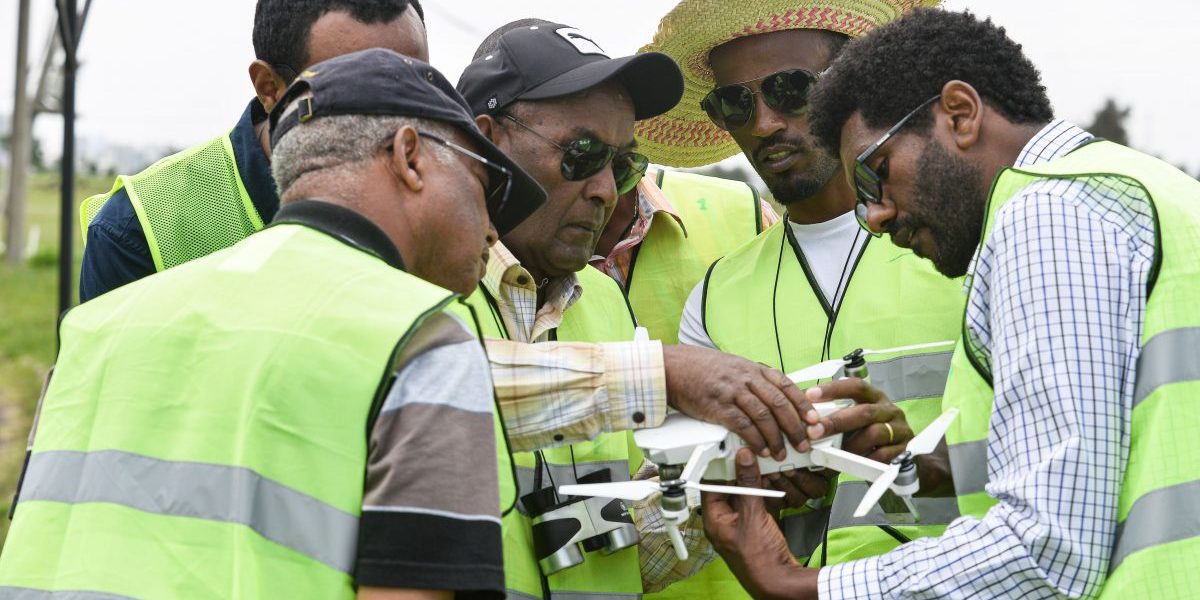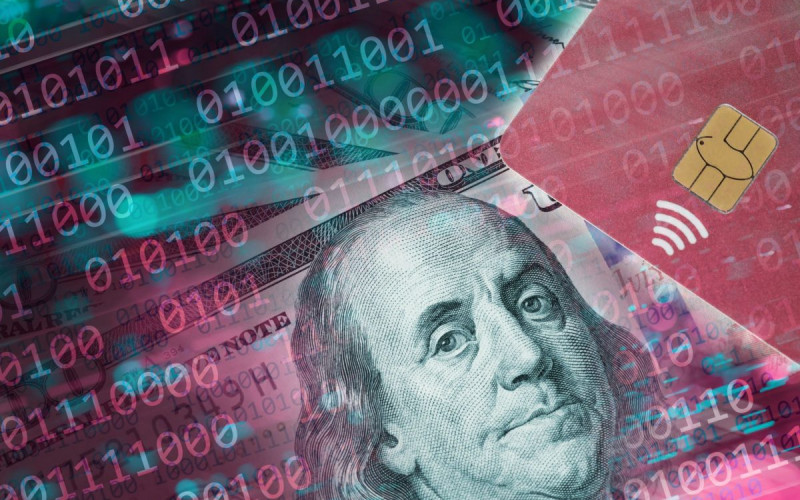Recommendations
The following recommendations aim to guide practitioners in how to develop and implement inclusive digital and technology-based interventions:
- Governments should focus on the core problems faced by residents, communities and organisations, and design solutions accordingly. The right technology can then be chosen based on what fits the user and the problem, is sustainable and creates impact.
- Greater capacity and technology literacy should be developed at all levels of government to combat misuse and misunderstanding of technology’s role in the development of society.
- Governments should make sure good knowledge management and monitoring and evaluation processes are in place to learn from failures and successes in using technology in development.
Executive summary
As the world becomes increasingly connected through technology and digital innovations, technology Is also being framed as a panacea for developmental issues. Its application in the development sector is known as information technology for development (IT4D). While technology has clear commercial value, its use for social good is more complex. Even implemented with altruistic intentions, technology interventions can reinforce social and economic inequality, power imbalances and governance issues. This policy briefing discusses how the digital divide plays out in Africa, and how concepts of inclusion and equity need to be considered in technology interventions to overcome (rather than exacerbate) this. The briefing also gives examples and best practices of how governments can incorporate inclusion and equity into their policy development and implementation to mitigate the inevitability of the digital divide.
Introduction
In the era of digitisation, it is no surprise that technology is seen as a one-size-fits-all solution for all global issues. As Luyt notes,1Brendan Luyt, “Who Benefits from the Digital Divide?”, First Monday 9, no. 8 (2004): 1–24.
at the highest levels of government and intergovernmental organisations, this newest form of information technology is viewed as a ticket to everlasting peace, progress, and prosperity … hopes remain that the application of information technology will solve many of the problems now confronting the planet.
Especially in the development sector, IT4D has emerged as its own sub-category, with policy papers, projects and interventions across the globe leveraging technology to address developmental challenges.
While technology undoubtedly offers many commercial benefits, as a social good it is more complex. Even well-intentioned technology interventions run the risk of reinforcing and at times exacerbating social and economic inequality, power imbalances and governance issues. For example, there is a risk of rolling out interventions that reinforce what has become known as the digital divide, where groups of people (most often wealthier) have better access to data (in different forms, either mobile or in-home broadband). This makes it easier to use technology for developmental outcomes, for example commenting on a municipal budget. Marginalised groups, which are often the target audience for development projects, are less likely to have access to data, which means that technologybased interventions are less viable and accessible in these communities. This becomes problematic, as technology-based interventions favour those with access to the Internet, data and technology. Yet, despite this obvious barrier to entry such interventions are commonplace, while their metrics for positive impact are less clearly defined and documented.
This policy briefing discusses how the digital divide plays out in Africa, and how concepts of inclusion and equity need to be considered in technology interventions to overcome (rather than worsen) it. It also provides examples and best practices of how governments can incorporate inclusion and equity into their policy development and implementation to mitigate the inevitability of the digital divide.
Understanding the digital divide globally and in Africa
The term ‘digital divide’ refers to ‘those who have ready access to information and communications technology (ICT) and the skills to make use of it and those who do not have ICT access or skills’.2Samia Mohamed Nour, “Africa Bridging the Digital Divides” (Policy Note, Nordic Africa Institute, Uppsala, 2017).This divide is commonly viewed globally, comparing Internet penetration and mobile-broadband subscription rates between the global North and South. According to the International Telecommunication Union (ITU), only 20% of the population in Africa has access to the Internet compared to almost 50% across the entire world, and 80% of the population in developed countries.3Nour, “Africa Bridging the Digital Divides”.The ITU focuses on specific indicators to assess the extent of the global digital divide, such as ‘mobile-broadband subscriptions, fixed-broadband subscriptions, and the percentages of individuals using the Internet, with access to Internet at home and with a computer’.4Nour, “Africa Bridging the Digital Divides”, 4.Kamau raises the idea of a ‘global village’ where ICT has enabled a global interconnectedness like never before, but that not all regions are part of this global village and able to connect. He goes on to describe the digital divide as the ‘social economic difference between communities in their access to computers and the Internet’.5Stephen Njihia Kamau, “A Digital Africa Kiswahili Holds the Key”, Journal of Language, Technology & Entrepreneurship in Africa 1, no. 1 (2008).What exactly are the current barriers?
In developing regions, and more specifically African countries, certain factors contribute to the inaccessibility of the Internet, data and computers. Firstly, computers are expensive, even for middle-income citizens in Africa. Secondly, the cost of accessing the Internet is high. Thirdly, reliable electricity is often a challenge, especially in informal settlements and rural areas with no electricity access. The digital divide also refers to a certain level of digital literacy to be able to benefit from ICT infrastructure: skills and understanding of how to use computers and other digital infrastructure, such as mobile phones and applications. Related to this is the challenge of language, where most applications, websites and other programmes are not available in African languages.
These are just some of the reasons why a digital divide exists globally between regions. There are also other dimensions to it, eg, societies with high levels of inequality, and inequality between genders where women are traditionally marginalised.
Technology for development and the digital divide
There is a belief that ‘how technology is implemented is just as important as what is implemented’.6Tikki Pangestu, “What’s the Key to Using Technology for Development?”, World Economic Forum, July 2015, https://www.weforum.org/agenda/2015/07/whats-the-key-to-using-technology-for-development/This is a central theme in the T4D field. This entire concept should be challenged, because technology has always been used in development, in all eras and contexts. Such framing erroneously presents technology as the solution, when it is the initial problem driving the digital divide. Development is about providing people with the ability and resources to improve their livelihoods. Fundamentally, it is about meeting a community at a starting point and moving along with it as its socio-economic, health, education or other developmental metrics are improved. In implementing development, technology – whether in the form of paper, computers, the Internet, health equipment or textbooks – is used. The recent popularisation of T4D seems to follow a similar path to that of the Fourth Industrial Revolution, where a certain grouping of technology, which may or may not include recent technological developments and often unproven or partially proven technologies, is put forward as a solution to drive or replace existing methods.
This could be because governments, donors, global agencies and international organisations are led by people who do not have the necessary digital literacy skills. They do not have a sufficient grasp of technology to understand that it is a mechanism or channel for the delivery of a solution, rather than a solution itself. All successful examples of T4D in Africa – including mobile banking, financial and money systems such as M-Pesa, edutech and online knowledge sharing or learning (such as in agriculture), civic technology and open data, and connectivity (such as broadband roll-out) – were intended to solve more fundamental problems. These include education, health, access to information, participation in democracy and financial agency. Against this background, the digital divide is likely worsened by inappropriate mechanisms (technology choices). Where development is delivered effectively, the correct technology is being used – ie, it is sustainably accessible, usable and accepted by the people who use it, and effectively delivers the actual solution.
The solution of M-Pesa, a money-transfer platform out of Kenya, is not banking and payment mobile technology, but giving those who are unable to access the formal banking sector the ability to bank and make payments. The solution of public participation is empowering people to take part in democracy and governance, not the civic technology app that might enable that participation (discussed further below). The roll-out of broadband is connecting people to information, not installing fibre. In the same way, when development is achieved, it is important that the focus is the solution and not the mechanism of delivery.7Indra de Lanerolle, Tom Walker and Sasha Kinney, Sometimes It Is About the Tech: Choosing Tools in South African and Kenyan
Transparency and Accountability Initiatives, Report (Making All Voices Count, 2016), https://www.makingallvoicescount.org/publication/six-rules-thumb-select-tools-transparency-accountability-projects/.
Digital inclusion and civic technology
Apart from the digital divide, scholars and practitioners also discuss digital inclusion. Whereas ‘digital divide’ literature problematises unequal access to ICT infrastructure and the means to use it, ‘digital inclusion’ acknowledges the importance of access to digital infrastructure. It advocates a society in which ‘all members have equitable and affordable access to high-speed Internet-connected devices and online content … [and] all members can take advantage of the educational, economic, and social opportunities available through these technologies’.8Institute of Museum and Library Services and International City/County Management Association, Building Digital Communities: A Framework for Action (Washington DC: Institute of Museum and Library Services, January 2012).Digital inclusion sets out the vision of what is possible with the continued advancement in ICT.
It has been questioned whether the digital divide will ever be closed, with ‘a universal policy making provision of high-speed internet affordable as a way to further reduce the divide without promising that the gap will ever be entirely eroded’.9Obiageli Ohiagu, “Information and Communication Technologies: Widening or Bridging the Digital Divide?”, Jolincs, Journal of Linguistics and Communication Studies 3 (2013): 86–89.This is important, because it brings to light the shortcomings of focusing too heavily on access to the Internet and computers, rather than on implementable development policies, as a way to bridge the subsequent knowledge gap.
Focusing too much on digital technologies or ICT infrastructure as a means to increase access to knowledge and information overlooks other important barriers, such as the need for improved governance, participation in decision-making and more responsive governmental communication. Continued technological advancements and the popularity of ICT for social goods have resulted in governance systems and knowledge-sharing mechanisms being overly reliant on technology, without becoming open and accessible in a world characterised by a digital divide. While some digital inclusion frameworks are starting to recognise this, there is often a tendency to overemphasise the need for expanded ICT infrastructure and focus less on the inaccessible nature of governance and decision-making to citizens who are already marginalised.10Kamau, “A Digital Africa Kiswahili”.
As S Craig Watkins, a professor in sociology and media at the University of Texas, states:11Paul T Jaeger et al., “Digital Divides, Digital Literacy, Digital Inclusion, and Public Libraries: The Intersection of Public Policy and Public Access”, Public Library Quarterly 31, no. 1 (2012): 1–20.
I think about 15 years ago when we used the term digital divide, we were talking largely about the question or the concern around access to technology. Fast forward about 10 or 15 years later to 2011, and now when we talk about it, I think it’s less about access to technology and more about participation.
Within the T4D context, civic technology, to varying degrees of success, has tried to play a role in dealing with more intangible dynamics that exacerbate the negative impacts of the digital divide. Despite early promises of being able to ‘hack’ some of society’s and government’s challenges, many civic technology projects failed and either reproduced or exacerbated the inequalities represented by the digital divide. Practitioners have begun to recognise this and are trying to think deeper in the rationalisation, design, development and implementation of such projects. This realisation is reflected in organisations’ reproducing and rethinking theories of change. The Alidade project, for instance, leads practitioners through a series of rationalising questions and principles for digital development under construction. This indicates a recognition that ‘technology for technology’s sake’ does not solve problems, especially given the driving factors of the digital divide. It is clear that there is a need to look beyond ICT infrastructure and digital inclusion to overcome the challenges of the digital divide. Going forward, development practitioners need to focus on institutional barriers and structures, which are over-reliant on ICT to address societal problems.
Conclusion
In order to combat the digital divide and use technology effectively for meaningful outcomes, governments and donors need to look beyond hype and stop viewing technology as a panacea. Instead they need to find ways to leverage scalable change by designing with users and designing for trust. This requires solutionist thinking to evolve to problem-driven approaches, which focus on reaching people and co-creating together with users, so that technology choices are the final step in finding a solution rather than the first. This is not to say that large investments in ICT are not critical, but rather that a mind shift is needed to focus on how technology can be used to produce meaningful outcomes, rather than on technology itself. Rhetoric around technology buzzwords and hype cycles needs to be replaced with a focus on problem-defined interventions and recipients.
Acknowledgement
SAIIA gratefully acknowledges the support of the Swedish International Development Cooperation Agency (SIDA) for this publication.







